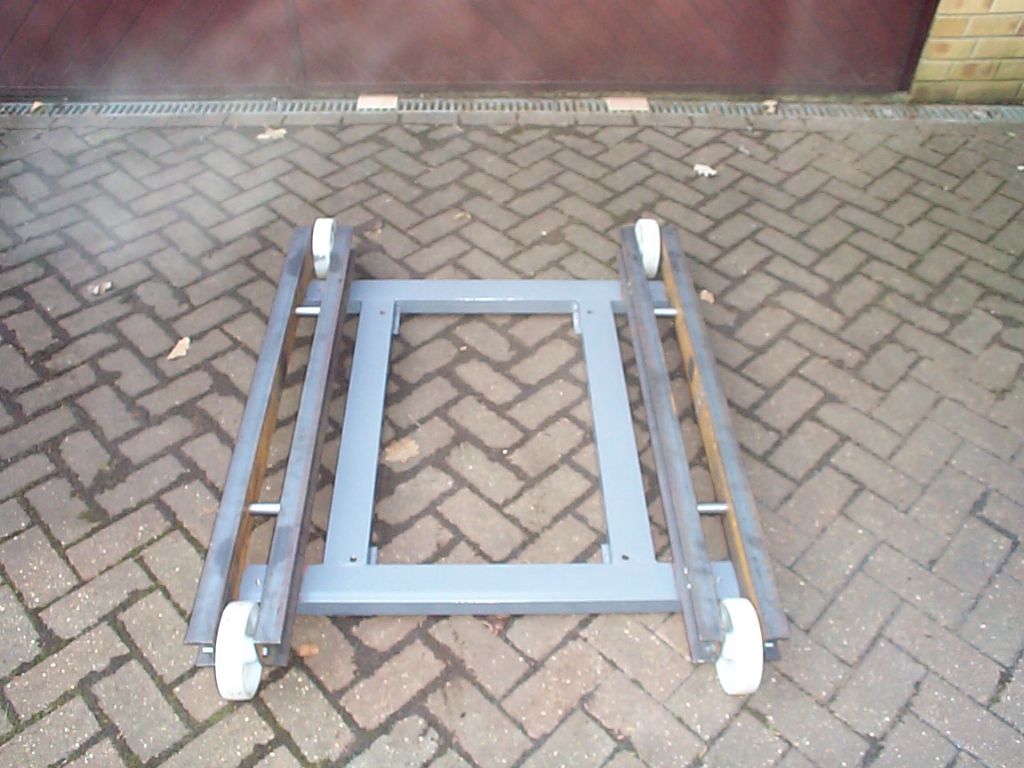The fundamental problem with a pallet jack is that the narrow track of the steered wheels makes it, for all practical purposes, a three wheeled vehicle. Hence the area of stability is much smaller than it appears at first sight so any sideways movement of the load C of G in a generally towards the steered wheels direction will cause it to tip.Because you are pulling via the steered wheels any attempt to turn tends to try and pull the front out from under the load. Especially if an obstruction such as a small stone or even expansion joint is hit.
A Bridgeport falling off a pallet truck makes a very impressive bang! 20 ft away was quite close enough to watch the disaster unfold from thank you.
I have a monster castor dolly that moved my Bridgeport in a satisfactory, not too scary, manner. Frame is 3" by 1" aluminium bar of similar size to the Bridgeport base with a top made form the waterproof chipboard underflooring sheets. The slightly rough surface is very good at reducing slip. The four castors have small diameter wide wheels maybe 4" by 2 1/2" diameter and load capacity over 2 tons.
I took the head right off and removed the turret which usefully reduced weight and tippyness.
Having a 90° off camber right angle bend to negotiate round the side of the house I arranged rectangular 2 x 2 timer frames towards the outside ends of the table and dropped the knee to give an inch or so of ground clearance to minimise any tipping. One frame did settle onto the ground when negotiating the off camber bend but the machine sat there nice and stable whilst we figured out our next move. There were a couple of other undramatic touches too but all resolved by carefully applied anti-tip pressure in the right places. Due to the small angles involved I guess the actual tipping force was probably only about 20 lb or so.
An engine crane does fine for re-fitting turret and ram but best way to re-mount the head is to set it on an R8 taper spigot affixed to the table via a decent size foot. Manipulating the table and knee screws makes it easy to align the head with the ram fixings.
When tilting the head for the first time on a new to you machine its prudent to arrange extra support for the head so it cannot fall should there be issues with the tilt rotation worm and wheel. Failure is not unheard of and significant wear quite common. Mine wasn't in the first flush of youth. The upper part of the wheel showing significant wear so I'm rather glad I didn't try to invert the head. I've no reason to expect that it wouldn't ahve been OK in practice but ….. To me the worm and wheel seem quite small for the loads involved.
Clive
Colin Heseltine.







